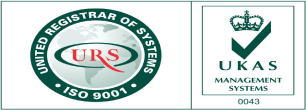
Simcenter Kinematic – Dynamic
Integrated Multibody Dynamics Simulation
Understanding the operating environments for intricate mechanical systems – like the mechanisms in photocopiers, sliding automotive sunroofs, or aircraft wing flaps – can be challenging. Many CAD-based tools offer kinematic solutions that help designers cycle a mechanism through its mechanical path for interference checking. Kinematics alone, however, doesn’t provide all the critical information you need, such as the dynamic loads generated by moving parts that can be used to size motors.
Simcenter 3D offers multi body dynamics simulation capabilities that go beyond simple kinematics. Motion analysis calculates the reaction forces, torques, velocities, acceleration and more for mechanical systems. Simcenter 3D lets you directly convert CAD geometry and assembly constraints into an accurate motion model, while the embedded motion solver and robust postprocessing capabilities allow the study of a broad range of product behaviors.
Rigid Bodies
A complete solution for multibody dynamics and kinematics analysis of rigid body mechanisms. Solutions can also include 2D and 3D contact between complex geometry. Simcenter 3D provides a complete solution for kinematics and dynamic motion analysis of rigid bodies. But what makes Simcenter 3D unique is the ability to use exact geometry to define the motion mechanism. Simcenter 3D can automatically create a motion model based on a CAD assembly by defining each part of the assembly as the rigid body, and converting each assembly constraint into the appropriate motion connection. Simcenter 3D can also easily model and simulate contact between 3D bodies, and an additional benefit of using the exact geometry is that contact analysis will also be accurate.
Simcenter 3D motion analysis directly converts the CAD assembly into a functioning motion analysis model. Additionally, the motion model is associative to the CAD geometry, which means the motion model will automatically update when the CAD design changes. Supported motion modeling features include:
- Mechanical joints
- Constraints
- Springs
- Bushings
- Dampers
- 2D and 3D contact
Flexible Bodies
Evaluate part compliance effects on mechanism performance by analyzing both elastic deformation and rigid body motion. This facilitates a more accurate understanding of part and mechanism performance. Simcenter 3D enables designers and engineers to investigate design performance using higher-fidelity models that combine elastic deformation and rigid body motion. Including part flexibility in your model can help if your analysis conditions include sharp impacts and/or sudden changes in motion, or if the component is flexible enough to affect the motion of the mechanism.
Flexible body motion analysis can provide crucial insight into your product’s performance that may not be available through rigid body analysis alone. Accounting for flexible bodies in you analysis allows a more thorough and complete evaluation of part and mechanism performance.
The Simcenter 3D workf low used to perform a flexible body analysis is very straightforward. Working in Simcenter Motion, you define one or more components in your mechanism as flexible. Simcenter will replace the rigid components with equivalent finite element models that enable part stiffness to be taken into account. Behind the scenes, NX Nastran performs a component mode synthesis analysis. This analysis enables Simcenter 3D to represent the dynamic behavior of the flexible component with an equivalent set of mode shapes.
Interference Checking
Use real CAD geometry in your motion models, and conduct packaging and interference studies that take part flexibility and mechanism compliance into account. Simcenter 3D can solve these problems because it provides a true multi body dynamic solver that can compute the displacement and position of assembly components connected to springs, bushings and flexible bodies. Additionally, Simcenter 3D makes it quick and easy to solve motion analysis because it can automatically convert a CAD assembly into a motion model. By using your geometry directly, you can then get a true understanding of how your mechanism will behave in its operating environment and determine whether you need to make design changes to avoid interference issues.
Interference checks are important when part motion is involved, such as motion of an automotive suspension or an aircraft landing gear mechanism. It is crucial to understand the potential for interference over the entire range of motion involved, and to account for flexible components that add compliance to the system.
Simulation with flexible bodies not only allows you to determine if you have an interference problem due to part compliance or flexibility, it also tells you exactly where the interference occurs and during which portion of the motion cycle. This allows you to react to the issue precisely, saving precious time and increasing your ability to mitigate the issue without going through numerous iterations or physical testing.
Co-Simulation with Control Systems
Verify whether a control system design is robust enough to control the dynamic mechanism, and help eliminate costly changes later in development. You can increase engineering productivity by simulating and optimizing both the mechanical and control systems concurrently. Simcenter 3D has the ability to co-simulate mechanical designs coupled with control systems. Co-simulation helps the mechanism designer and the control system designer test the interaction between the mechanical and electronic systems early in the design process. Early testing can help verify whether the control system design is robust enough to control the dynamic mechanism, and help eliminate costly changes later in development.
Simcenter 3D can co-simulate motion models with control systems designed in either LMS Imagine. Lab or Matlab/Simulink. This helps you evaluate the performance of controls and mechanical systems simultaneously as well as understand the interactions between the two systems.
Solution Flexiblity
The co-simulation can be run from the Simcenter 3D, or from within LMS Imagine. Lab or MATLAB/Simulink, allowing real-time monitoring.


